Discover 5 crucial reasons you should always weigh your ingredients on a kitchen scale when you bake. Learn how to properly use a digital scale, and master the essential tare feature for better baking results.
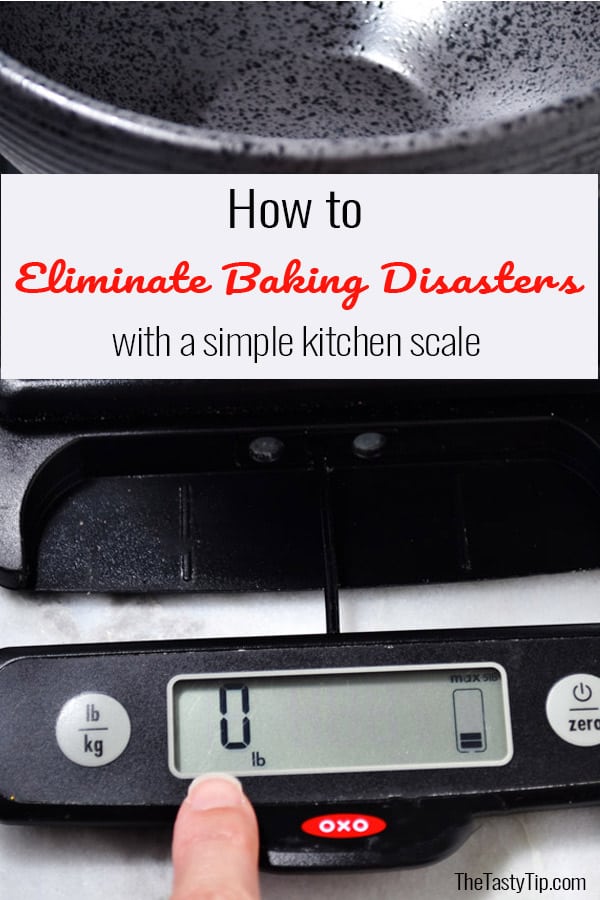
Do you struggle to get consistent results with your baked goods? Have you heard you should weigh your ingredients on a kitchen scale, rather than use measuring cups?
I heard this for years, but I never paid attention. It didn’t seem important and I didn’t see the immediate benefits to weighing ingredients. It was just an extra step - first to buy the scale and then to pull it out every time I baked.
After I finally bought a digital kitchen scale, I didn't use it very often.
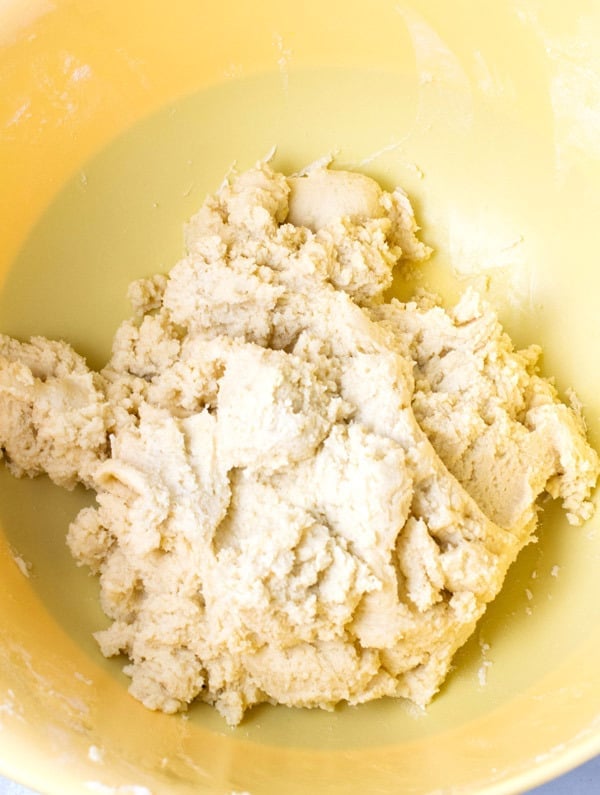
But when I began experimenting with my Snickerdoodle Cookie recipe, I had a problem. My results were never consistent.
Sometimes the cookie was fantastic. It was soft and chewy and spread out perfectly.
Other times, the cookie dough plopped on the baking mat and didn’t spread out at all. No one likes a dry cookie.
It was so frustrating to never get consistent results with my cookies.
That frustration led to a shift in the methods I used to develop recipes for baked goods. I began taking good notes on the recipe experiments AND I began using a digital kitchen scale to weigh my ingredients.
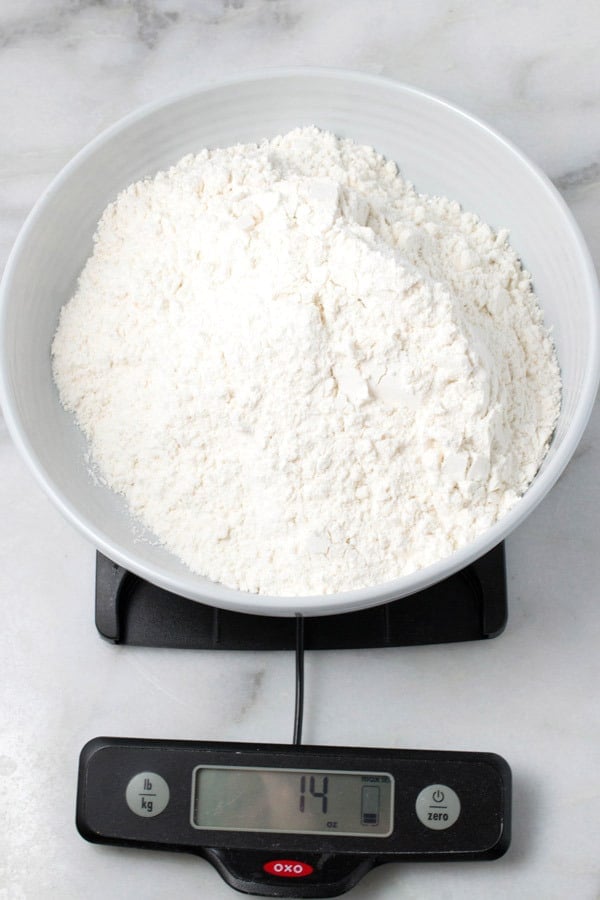
Weighing ingredients -- especially flour -- is the single most important baking technique I have ever discovered.
Difference Between Volume and Mass

Volume can be measured with a measuring cup. If you remember back to algebra, you will remember volume equals length times width times height (Volume = length • width • height).
Unfortunately, measuring volume is not always precise. You cannot tell that you are adding just a bit more or less flour to your measuring cup than the recipe developer added to her cup.
Not convinced you should weigh your ingredients with a kitchen scale? Here are the top reasons why you should give it a try.
1. Increase Accuracy in Your Baking
When you weigh your ingredients, you know exactly how much of an ingredient you are using.
For example, measuring flour by volume (with a measuring cup) will not always give you the amount of flour the recipe calls for.
Over time flour will settle, resulting in less air between the flour particles. With less air between the flour particles, more flour will pack into a measuring cup.
In contrast, if you sift the flour or mix it with a spoon, you will get more air between the flour particles. As a result, less flour will fit in a measuring cup.
So if you read a recipe that does not have a weight measurement, beware. Your cup of flour (measured with a measuring cup) may not be the same amount of flour that a recipe developer had in her cup of flour.
On The Tasty Tip, we always use weight measurements for ingredients in baked goods. Especially when it comes to flour, sugar, and the other ingredients listed below.
You can be sure that if weigh your ingredients, you will add the right amount of ingredients for the recipe.
Note: Most home kitchen scales do not have the accuracy to measure very small amounts, such as teaspoons and sometimes tablespoons. For these measurements, use a measuring spoon and level the top before adding it to the recipe.
These ingredients added in such a small amount will have minimal impact on the recipe if they are slightly off.
Measuring is essential for bakers. Bakers need an even higher degree of accuracy than do cooks. For example, if you add too much flour to a cookie recipe, the cookie may be too dry or not spread.
On the other hand, if you make Black Bean Soup, you don't necessarily need to weigh your ingredients.
When you add a carrot to your soup, it may be bigger than the carrot I used when I made the recipe. However, a bit more or less carrot will not affect the taste of the soup significantly. It will also not affect how the soup is prepared.
In addition, chefs can taste as they go along. If they need more salt or seasoning, they add it as they go.
Bakers do not have this option. If your baked recipe is off, due to inaccurate ingredient amounts, the results may range from not tasting as good to being completely inedible.
2. Increase Consistency in Recipe Results

One of the biggest benefits I personally found with weighing ingredients is that my recipes were consistent.
I mentioned earlier about the inconsistency of my Snickerdoodle Cookies before I started weighing ingredients.
When I began weighing ingredients, these inconsistent results vanished.
Weighing ingredients allows you to really be adding the same amount of ingredients that the recipe developer added when writing the recipe.
I would be very cautious of recipes for baked goods that you may find that do not have a weight measurement listed.
To compensate for this vital information left out by the recipe developer, weigh your ingredients (especially flour) based on the volume measurements.
Then note how the recipe turned out. Was it too dry? Did the cookie spread or stay in a plop? Did it hold together or crumble apart? How long did it take to bake?
Any of these problems with the finished product could indicate more of less flour was needed. You may have to do your own recipe development to fix the problem.
Or just find recipes that give weight measurements. That is surely the easiest option.
3. Easily Scale Recipes Up or Down
One of the reason professional bakers weigh their ingredients is because they can easily scale the recipe up or down.
If you have a favorite recipe and need to scale it up for a bake sale or party, it is much easier to do so when you have the ingredient weights.
It is also easier to do more than just double a recipe. You can increase or decrease it by any ratio you want.
4. Save Time and Dishes
You will also save time when you weigh ingredients. You can simply pour the ingredient into the bowl until you get the right weight. It takes less time than measuring by volume.
In addition, you don’t need to pull out or wash all your measuring cups.
5. More Consistent Portion Control and Sizing in Finished Product
Do you ever notice how professional bakers or restaurants produce the same size cookies or tortillas, etc.? Have you ever wondered how they get them the same size?
The answer, they weigh their portions.
I saw this principle of weighing portion sizes in action on time while eating at Cafe Rio. As I watched the worker make the tortillas, she expertly sectioned dough and weighed each one.
She was skilled at getting the right weight on the first try, but I observed her adding to or taking away from tortilla dough occasionally.
If you also want consistent sizes of finished product, weighing the dough is the way to go.
The Most Important Ingredients to Weigh on a Kitchen Scale
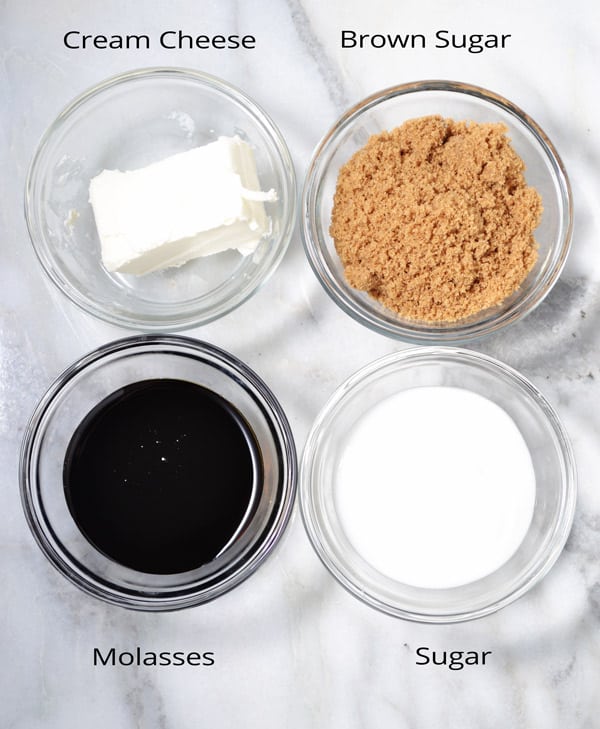
The most important ingredients to measure on a kitchen scale are:
- Flour
- Brown Sugar
- Honey
- Butter
- Sour Cream
- Peanut butter
- Molasses
- Anything that is a pain to get into a measuring cup and an equal pain to scrape out of the measuring cup.
What Ingredients Do Not Need to Be Weighed on a Kitchen Scale?
A home cook will likely not have a kitchen scale that can accurately weigh items used in tiny amounts, such as salt, baking soda, baking powder, or spices.
Use a measuring spoon for these items.
Also, many liquids like water and milk can be accurately measured with a liquid measuring cup. So they do not need to be weighed.
How to Use a Kitchen Scale
A good quality kitchen scale with have a tare feature. This will allow you to weigh your ingredients in a bowl, rather than setting the ingredients on the scale itself.
For example, weigh the flour inside a bowl, rather than pouring the flour on top of the scale. That would be a huge mess.
What is the Tare Feature on a Kitchen Scale and Why Use it?
Tare weight on a kitchen scale is the weight of only the ingredient being weighed, not the container holding the ingredient.
For example, if I am weighing flour I want to see the weight of the flour only. I do not want the weight of the container and the flour together.
So I hit the tare button and the weight amount clears to 0 until I add the flour to the bowl.
Ingredient weight = total weight (container and ingredients together) - container weight
Instructions for the Tare Feature on Your Kitchen Scale
- Turn on the kitchen scale.
- Place an empty container on the scale. The weight of the container will display.
- Push the tare button on the scale. The weight will now display at 0.
- Pour the ingredient to be weighed in the bowl. Now the weight displayed on the scale will be the ingredient weight only.
Weigh Bakers Weigh
I hope you have been able to see the benefits from weighing ingredients when baking. As I mentioned, weighing ingredients such as flour, made the single biggest improvement to my baking.
After I began weighing ingredients every time, I became a better baker. Try it and see what you think.
How to Weigh Ingredients on a Kitchen Scale
Equipment
- Kitchen scale with tare feature
Materials
- Recipe ingredient
Instructions
- TURN on the kitchen scale.
- PLACE an empty container on the scale. The weight of the container will display.
- PRESS the tare button on the scale. The weight will now display at 0.
- POUR the ingredient to be weighed in the bowl. Now the weight displayed on the scale will be the ingredient weight only.
- ADD or REMOVE ingredient until you get the right amount for your recipe.
Notes
Did you notice a difference in your baking when you weighed your ingredients? Comment below and let me know your experience.

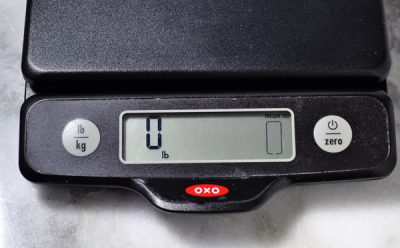
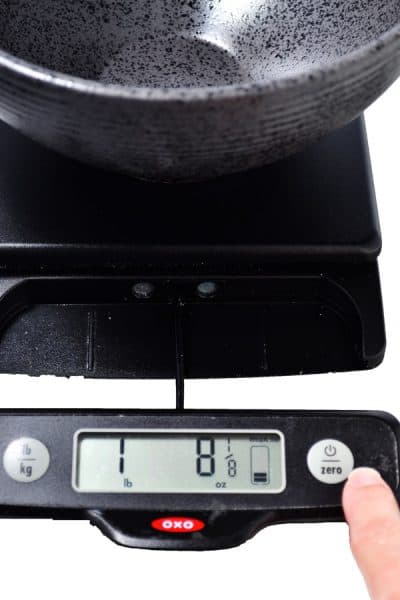
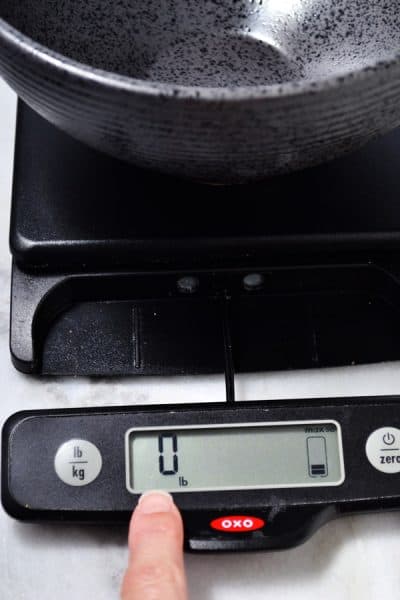
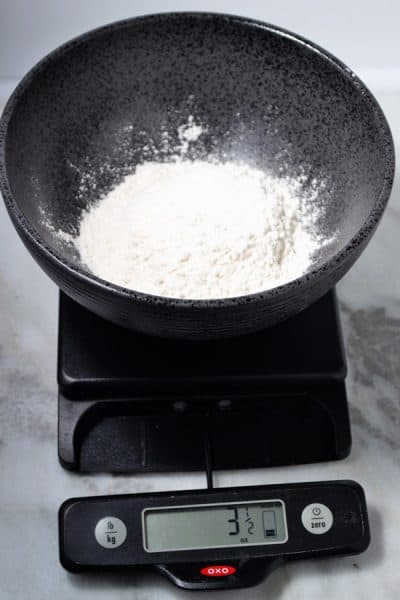
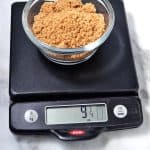
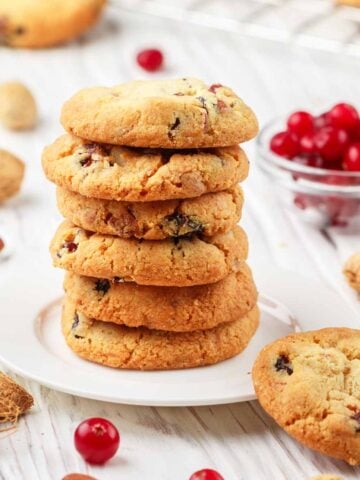
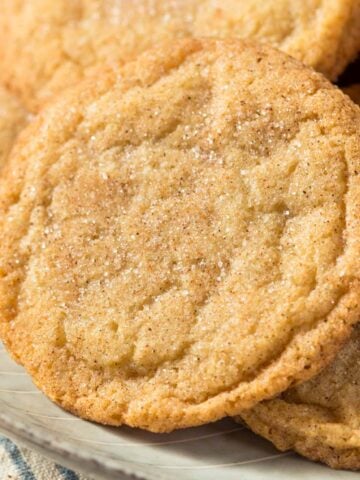
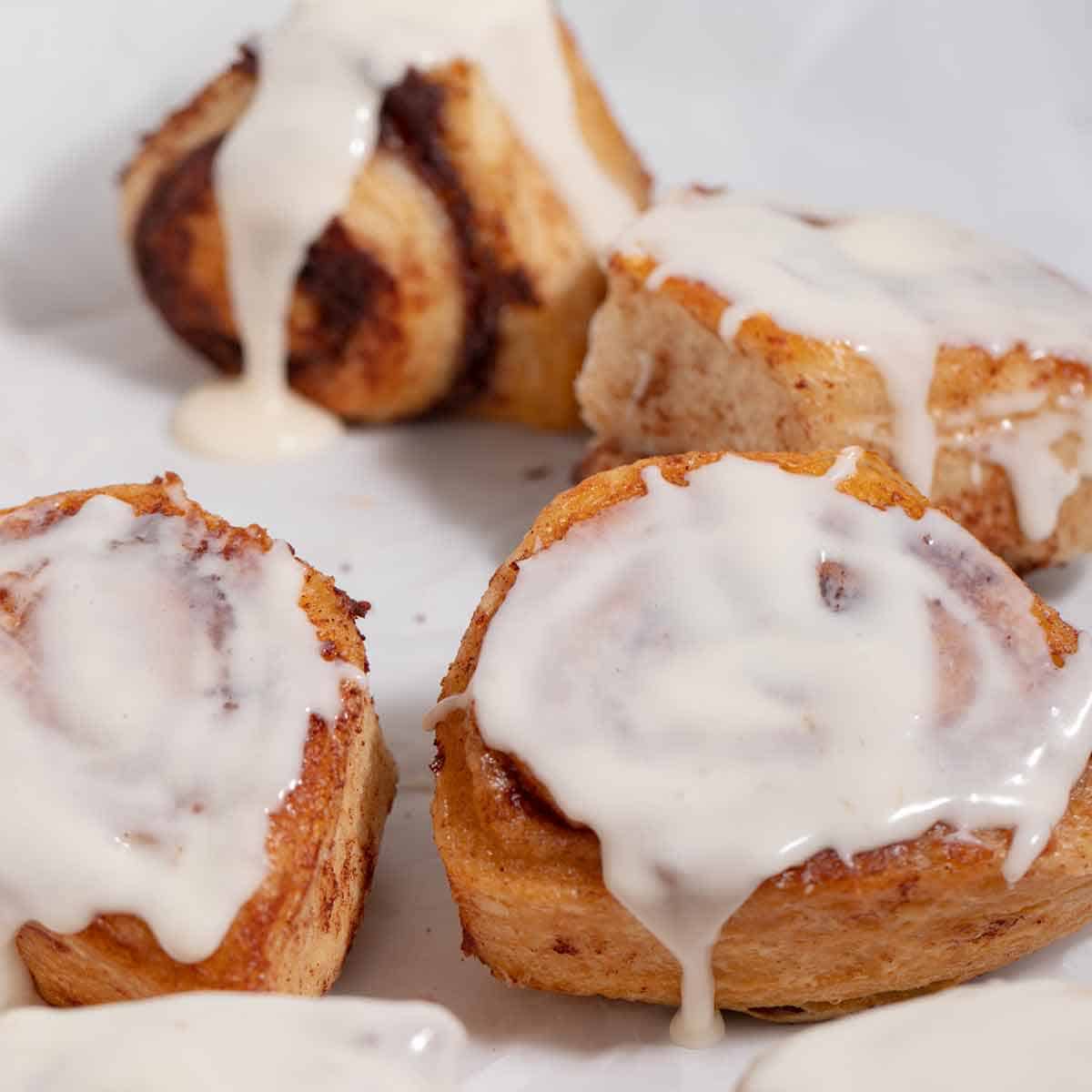
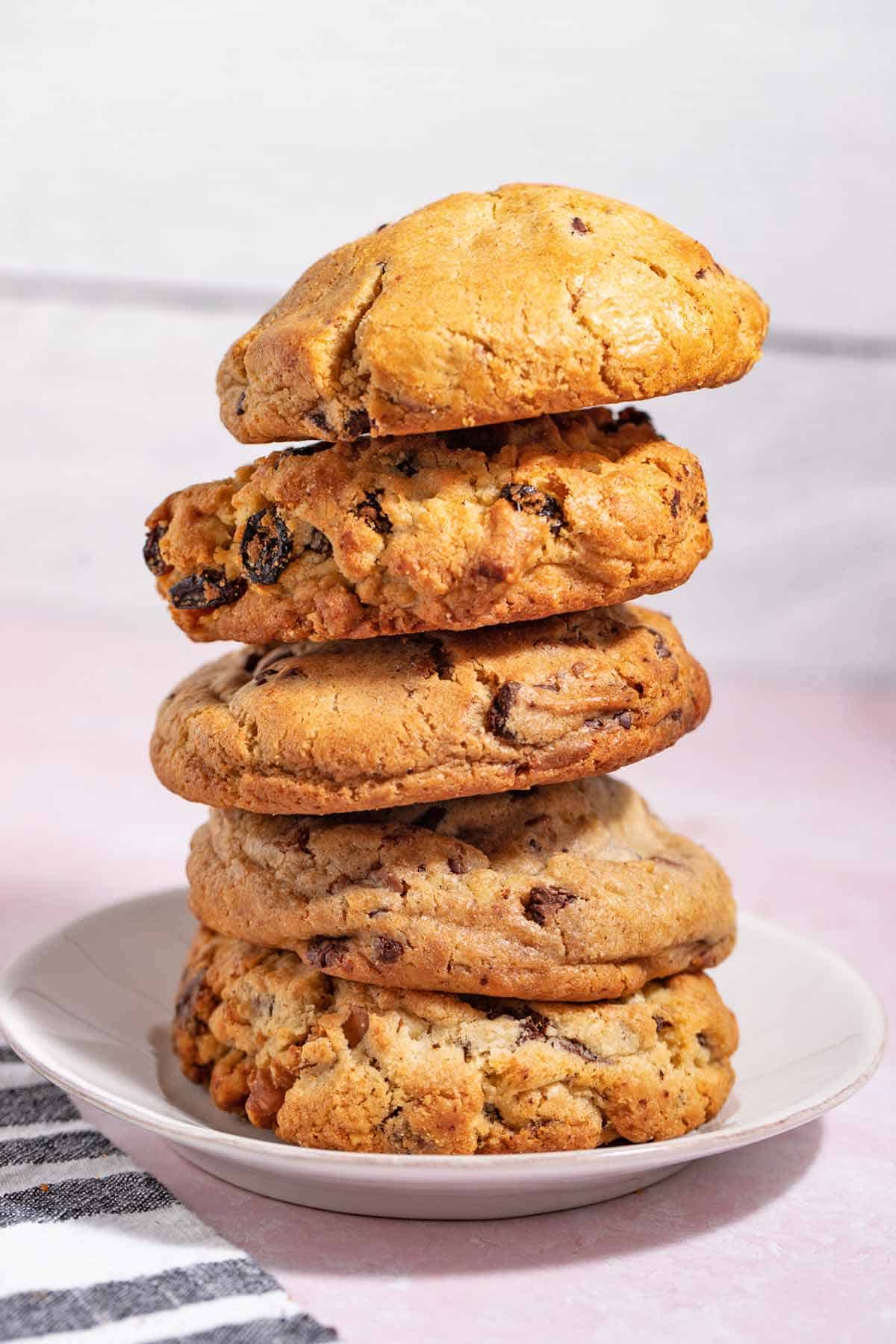
Elina Brooks
I'm thankful you informed us that we can produce baked goods with more consistent portion control and sizing if we weigh our portion sizes, which is what most professional bakers or restaurants do. I'm opening a pastry shop next month, so I want to make sure the food I bake offers good results. I'll keep this in mind while I look for electronic scales I can rent for my shop's kitchen soon.
Tami Mack @ The Tasty Tip
A kitchen scale is the way to go! Good luck with your pastry shop.